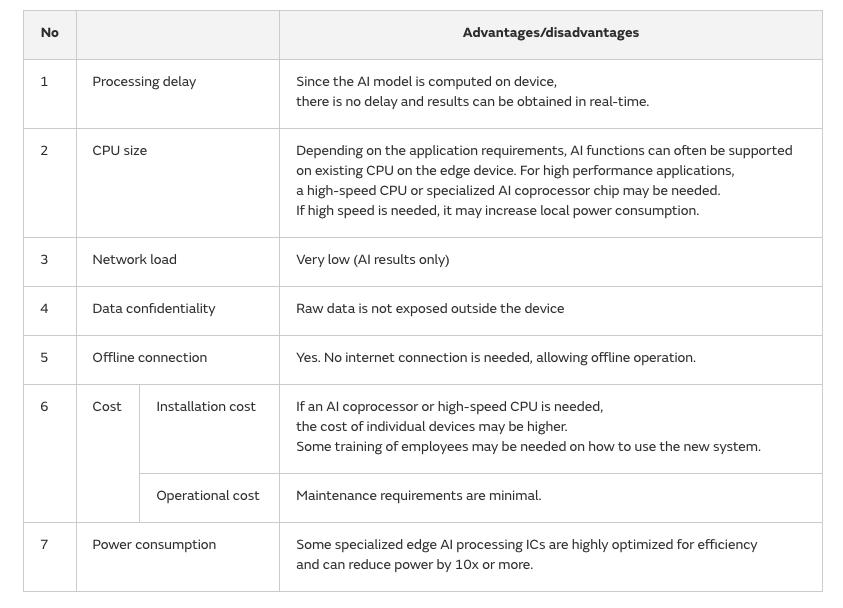Skip to Content
1. System Architecture

Key Components:
- CCTV Cameras:
- Installed at critical locations (entry points, work areas, warehouses, hallways).
- Continuously provide video data for analysis.
- Edge AI Devices:
- Hardware placed on-site (e.g., edge servers or AI-integrated IoT devices).
- Run machine learning models to analyze video from CCTV without needing to send data to the cloud.
- Factory Local Network:
- Connects CCTV and Edge AI for fast data transmission.
- Minimizes latency in processing.
- Central Management Software - MOJO AI VISION STUDIO :
- A management interface displaying notifications, reports, and live video streams.
- Can store data locally or integrate with cloud systems.
- Cloud Server (Optional):
- Stores data for long-term purposes and provides advanced analysis capabilities if needed.
- Synchronizes data with edge devices.
2. How It Works
Detailed Process:
- Data Collection:
- CCTV cameras capture real-time video.
- Video data is sent directly to Edge AI devices via the local network.
- Real-Time Analysis on Edge AI:
- Edge AI processes video data to:
- Detect safety violations (e.g., absence of helmets, reflective vests, or unauthorized entry into restricted areas).
- Identify abnormal behaviors (e.g., falls, collisions, or unsafe movements).
- Verify the correct usage of Personal Protective Equipment (PPE).
- Uses AI models such as YOLO, OpenPose, or advanced image recognition algorithms.
- Alerts and Actions:
- When a violation is detected, the system immediately triggers alerts:
- Alarms or warning lights on-site.
- Notifications via email, SMS, or management applications to the safety team.
- Logs incidents for later analysis.
- Storage and Reporting:
- Analysis results and video footage are stored in:
- Local memory on edge devices (short-term).
- Cloud servers (long-term, if needed).
- Generates periodic reports on safety compliance and incident frequency.
- Integration with Management Systems:
- The system connects to other platforms such as ERP or HSE (Health, Safety, Environment) systems to synchronize data and enhance management efficiency.
3. Model Diagram

- CCTV Cameras
↓ (Transmit video via the local network) - Edge AI Devices (Real-time analysis)
↓ - Alerts: Sent to on-site systems and CMS
↓ - Central Management System (Local or Cloud storage)
↔ (Integrates with other systems)
4. Advantages of the Model

- Quick Response:
- Processes data on-site, reducing latency compared to cloud-based systems.
- High Security:
- Data doesn’t need to be entirely sent to the cloud, reducing the risk of leaks.
- Optimized Bandwidth:
- Only sends critical information or alerts, saving network resources.
- Scalability:
- Easily add more cameras or edge devices if the factory expands.
- Lower Long-Term Costs:
- Reduces storage and processing fees on the cloud.
5. Specific Applications in Factories
- PPE Violation Detection:
- Checks if workers are wearing helmets, safety glasses, or reflective vests.
- Monitoring Hazardous Areas:
- Detects unauthorized entry into restricted or unsafe zones.
- Behavior Analysis:
- Identifies abnormal behaviors like slips, falls, or standing in unsafe positions.
- Headcount Management:
- Ensures the number of people in a workspace doesn’t exceed the limit.
6. Related Technologies
- AI Models: TensorFlow, OpenCV, PyTorch, Mojo AI Vision
- Edge AI Devices: Nvidia Jetson, Google Coral, Raspberry Pi
- Storage Systems: Hybrid Cloud (AWS, Azure) or on-premises systems.


